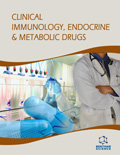Abstract
Two extraction methods: microwave-assisted extraction (MAE) and extraction by convection heating were used to assess the active antioxidant ingredients from Uva di Troia Canosina grape pomace. MAE gave higher yields in the recovery of resveratrol (70 µg/g versus 20 µg/g) as assessed by capillary electrophoresis (CE) analysis. The MAE was also advantageous as it allowed reduced extraction times: 15 minutes versus 30 minutes required by conventional heating extraction. However, both methods gave extracts endowed with comparable antioxidant activity as demonstrated by the 2,2-diphenyl-1- picrylhydrazyl radical (DPPH) scavenging assay (IC50 = 106±48 µg/mL versus 110±34 µg/mL, respectively). The observed antioxidant effect of the MAE extract appears to be correlated with the detected resveratrol concentration while other unidentified antioxidants may contribute to the radical scavenging effect of the extract obtained by convection heating. In agreement with previous results, our study underlays the possibility that the antioxidant properties of Uva di Troia Canosina grape could be attributed to resveratrol along with other polyphenols. Considering the multifunctional medicinal and health effects of resveratrol, the MAE method herein proposed may be considered as an efficient way to obtain resveratrol from Uva di Troia Canosina grapes.
Keywords: Capillary electrophoresis, DPPH, environment, microwave, polyphenols, resveratrol, Uva di Troia.
Graphical Abstract
 26
26

